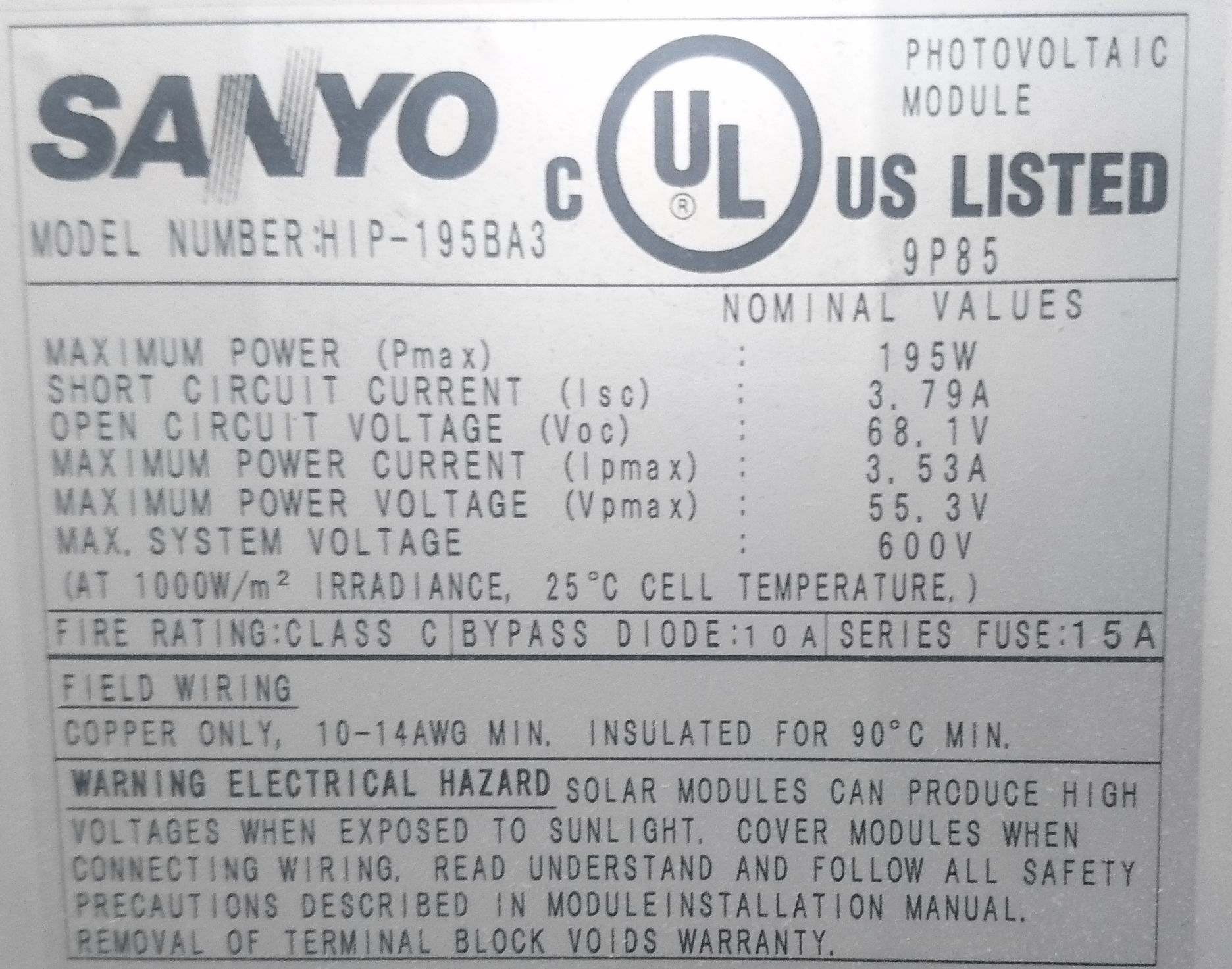Womp, womp. Firefox has been crashing a lot lately and well.... I lost a draft post from yesterday sooooo... this one won't be as long.
General Boat Updates
Earlier this summer before I got swamped with work a friend came around to help me give the boat a more thorough once than it's had since it officially became mine. The sail covers where damaged so I decided to pull the sails and store them below, all in all they're in good shape. The rigging will need full replacing. Two cables are fraying, tension is all over the place and the mast is out of shape. I've got my pricing done and it looks like it will be under $250 for more than enough cable, thimbles and crimps. Otherwise most of the hardware is in great shape, one of the previous owners replaced most of it with stainless steel parts.
More Powa!
I was given two Sanyo 195W solar panels! With this I decided to skip building a solar charge controller and focus on monitoring. I picked up some decent looking 30A controller that can both do MPPT and charge my LiFePO4 battery.

Look at all those numbers!
So with that coming later this week I want to think about current monitoring. Previously I was designing around the INA21x but I don't think that can handle above 26V. So any suggestions there would be helpful.
OK, that's all. Next trip to the boat will be in the rain! Yaaaay! I need to go out during a decent downpour of mark all my leaks. That'll be fun.
 morgan
morgan
Discussions
Become a Hackaday.io Member
Create an account to leave a comment. Already have an account? Log In.
Thanks for the tip, I had found an application note very similar to that one but targeting the INA138. Additionally, I did read Section 7.4.4 of the INA21x datasheet, but it made it seem more like a protection circuit than for sustained use. I'm also looking into the LM5066 at @Bharbour suggestion, though price/complexity might rule that one out.
Are you sure? yes | no
You could float the INA21x monitoring a current shunt at the top rail, using a regulator to create the "ground" at maybe (Vrail - 5V). In fact, you could float the entire current sensor including the display circuitry, or use an opto-isolator or RF module (even ESP8266) to transmit the data from the sensor to wherever you need.
Here's an example of the technique, with different parts: https://www.analog.com/en/analog-dialogue/articles/wireless-current-sense-circuit-floats-with-sense-resistor.html
In their case, they used 2x AA batteries for power, but you could come up with a regulator.
For a different approach, see also:
http://www.ti.com/lit/an/sboa295/sboa295.pdf
Are you sure? yes | no
Thanks for the tip, I had found an application note very similar to that one but targeting the INA138. Additionally, I did read Section 7.4.4 of the INA21x datasheet, but it made it seem more like a protection circuit than for sustained use. I'm also looking into the LM5066 at @Bharbour suggestion, though price/complexity might rule that one out.
Are you sure? yes | no
The part is designed as a hot swap power controller. I have used it as an eFuse in a couple of applications. We used to use the low voltage version in some crazy high current systems , like 250A. We tested them by slamming a pair of pliers across the output. It would shut down without trashing the FETs or the power supply. It was tough on the pliers though. The LM5066 should run without the FET in place. It will squawk about a shorted FET, but it will still read the telemetry fine.
Alternately, there is a measurement only version of that part, the LM5056 that doesn't expect a FET, so it won't squawk about it being shorted. I have not used the LM5056 part as much, so I kind of forgot about it.
The measurement accuracy at low currents on these parts stinks. They have a 12 bit adc, and the current measurement does not go below 64 counts or so. If you are pushing 3000 counts, that 64 is insignificant, on the other hand if you are only running 150 counts, the accuracy is pretty dismal.
Those floating ground arrangements for running a low voltage part at a high voltage creep me out. one slip with a scope ground and the smoke gets away. They can be made to work though.
Are you sure? yes | no
Here's the other resource for reference. http://www.ti.com/lit/ug/tidu833/tidu833.pdf
Are you sure? yes | no